Specification
| Optional | Tandem model as triple-passage design |
|---|
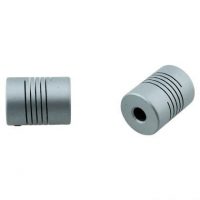

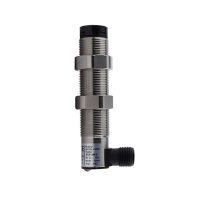
M18 single-beam sensors with 10 m (axial optics) or 5 m (radial optics) operating distance. M30 single-beam sensors with up to 60 m operating distance. Models with plastic or metal housing. Glass optics (more resistant to dust particle accumulation and abrasion). Models SH/TH_IA to be used in particular with the safety control unit SBCR03.


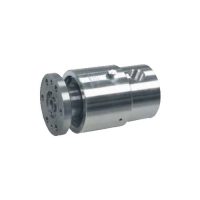


| Optional | Tandem model as triple-passage design |
|---|





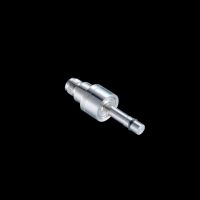










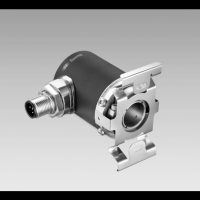









The CNTX-30-TP sensor combines small spot size and fast response to achieve high-speed contrast detection capable of detecting a wide variety of marks and objects.
The CNTX effectively detects contrast differences between many colors on various surfaces over a range of 50 grayscale levels.
The modulated white light source in the CNTX is focused to a 2.5 to 3mm spot and directed toward a target. The diffused light returning to the sensor is measured.
When the level is equal to or exceeds the threshold the discrete output changes state. Due to the fast response of the sensor, it is suitable for use in high-speed applications.
The sensor provides a discrete output that automatically configures to NPN and PNP. A PLC or a computer can be used to monitor the status of the discrete output signal.






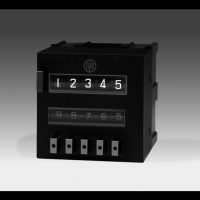





ulsed red laser diode

















Deublin has developed a number of hubmounted unions specifically designed to accommodate the passage of air between a vehicle’s stationary axles and its wheels. This allows tire pressure to be varied from inside the vehicle’s cab, and is already very popular in the logging industry and on military vehicles. The ability to vary the air pressure allows the driver to adjust pressure for the surface being traveled. Lower pressure with a broader footprint is suitable for soft terrain. Higher pressures and a smaller footprint is suitable for higher speed highway travel. Model 882, 2-passage union, Model 1115-000-001, Model 1102-025-001-004.








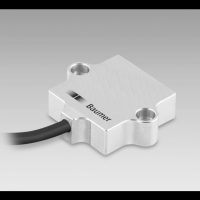





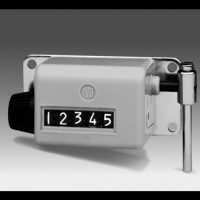




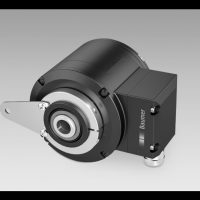











The BWF Series optical data transmission devices enable data to be transmitted quickly and reliably between an aligned pair of units over long distances. Typical uses are on overhead and stacker cranes, automated storage and retrieval systems (AS/RS) and transfer cars for non-contact bi-directional communication from the vehicle to the control unit. The use of modulated light as the transfer method means that these transceivers do not incur physical wear like trailing cables and slip rings nor do they require recalibration like radio systems.

The CWF/EWF Series are small, lightweight, economical type optical data transmission devices that enable data to be transmitted quickly and reliably between an aligned pair of units over mid- range distances. Typical uses are on overhead and stacker cranes, automated storage and retrieval systems (AS/RS) and transfer cars for non-contact bi-directional communication from the vehicle to the control unit. The use of modulated light as the transfer method means that these transceivers do not incur physical wear like trailing cables and slip rings nor do they require recalibration like radio systems.



The DM Series are half-duplex parallel-type and full-duplex serial-type optical data transmission devices that enable data to be transmitted quickly and reliably between an aligned pair of units over short distances. Typical uses are on automated guided vehicles (AGV), rail-guided vehicles (RGV) and overhead transports (OHT) for providing a wireless link between the vehicle and a fixed docking station. Special models equipped with a 25-pin D-sub connector provide SEMI E84 compliance for interfacing between semiconductor process equipment and automated material handling systems (AMHS). Through a pulse-modulated light beam these transceivers can send 4, 8, 16-bit or serial signals simultaneously in both directions from the active and passive sides depending on the application requirements and model used.

This sensor has applied “principle of echo” that sound reflects in a thing and comes on the contrary. It measures transmission time from projecting ultrasonic to receiving it and distance is measured.

The KAD-300 crane collision avoidance sensor is used to reduce the potential for collisions between overhead cranes, monorail systems, and fixed objects or obstructions located in the crane runway area. Built with a rugged metal housing, this device offers three separate outputs for distance settings up to 100 feet and is used to initiate slow-down and stop commands. In addition to the three outputs, the KAD-300 is equipped with a trouble (FAULT) output that will energize in the event a failure occurs with the internal emitter and receiver components.
A typical application would have the sensor unit mounted on the crane bridge and a reflective target on the opposing end wall or crane. With limited hardware, the KAD-300 allows for an ease of installation and maintenance. The flexibility of this device will allow you to configure it to variable frequency drives and stepped controls.

18, Jalan BPU9
Bandar Puchong Utama
47100 Selangor,
Malaysia
Tel: +60 3 5891 1918
Fax: +60 3 5891 1919
Email: sales@technical-avenue.com
18 Boon Lay Way
#04-118 Tradehub 21
Singapore 609966
Tel: +65 8777 2818
Mobile: +6012 402 2818
Email: sales@technical-avenue.com
Sentech Industries Co., Ltd.
43 Soi Rangsit-Pathumthani 12,
Prachathipat,Thanyaburi,
Pathumthani 12130,
Thailand
Tel: +66 2 567 4592
Fax: +66 2 958 4014
Email: sales@sentechindustries.com
Technical Avenue Co. Ltd
First Floor, No. 9, Road 27,
Van Phuc Riverside City, Hiep Binh Phuoc Ward, Thu Duc City,
HCMC, Vietnam
Tel: +84 896648466 (sales)
Tel: +84 888089582 (admin)
Email: salesvn@technical-avenue.com